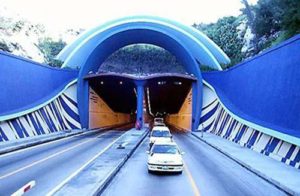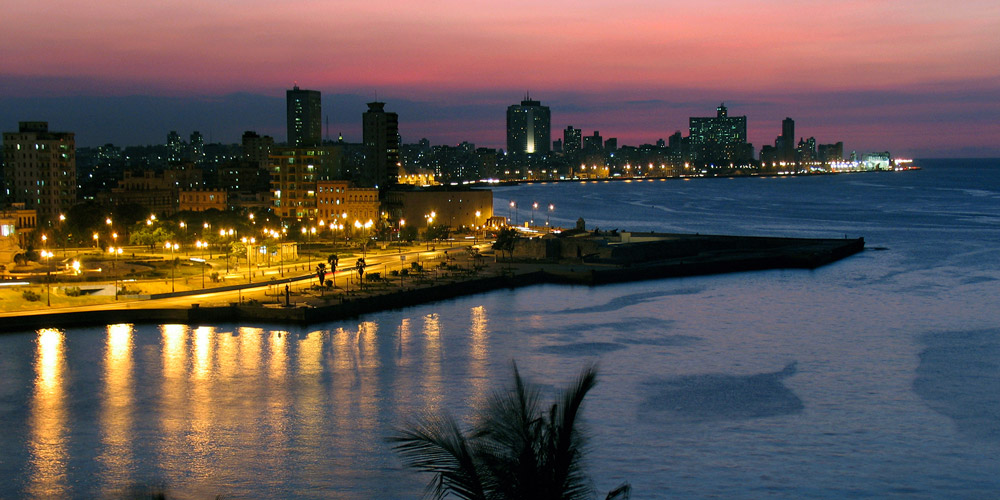One of the largest and boldest engineering works ever built in Cuba is the underwater tunnel that runs through the mouth of Havana Bay. Its culmination dates from 1958 and was in charge of the French company Societé des Grands Travaux de Marseille, and the Cuban engineer José Menéndez Menéndez was in charge of the technical direction.
The viaduct runs under the sea about 723 linear meters, and is located 2 meters below the bottom of the bay. Its depth with respect to sea level is between 12 and 14 meters.
The fundamental objective of such an embarrassing work has been to avoid a digression of tens of kilometers bypassing the bay to communicate with the east of the capital and other important regions of the country.
This track has four round trips and is based on a method of reinforced concrete tubes, capable of withstanding the strength of thousands of tons of seawater. The height of the tunnel is 4.25 meters, reason why the access is limited for some means of transport of great size. The cost of this colossal work was in its time of about 30 million dollars. Its execution lasted about 32 months.
Transit from one end of the tunnel to the other takes about 45 seconds at 60 kilometers per hour, when traffic behaves normally. In very few occasions, traffic jams are seen in the vehicular movement. According to the statistics, about 32 thousand vehicles make use of the facilities of this tunnel habanero every day.
Recently it underwent a capital repair that provided it with state-of-the-art technology in lighting systems, electrification, ventilation, pumping, fire, centralized technical management automatically and closed circuit television for surveillance.
Thanks to the construction of this shortcut could expand the residential area of the city to the east, creating residential areas such as Alamar, Villa Panamericana, etc. It is also this route one of the most popular alternatives to start the trip to the city of Matanzas or the resort of Varadero, among other relevant tourist sites located in the east of the Cuban capital.
El Túnel Submarino de la Habana, obra maestra de ingeniería en Cuba.
Una de las mayores y más osadas obras de ingenierías que se haya construido en Cuba es el túnel submarino que atraviesa la boca de la bahía de la Habana. Su culminación data de 1958 y estuvo a cargo de la empresa francesa Societé des Grands Travaux de Marseille, y el ingeniero cubano José Menéndez Menéndez tuvo a su cargo la dirección técnica.
El viaducto surca bajo el mar unos 723 metros lineales, y se encuentra 2 metros por debajo del fondo de la bahía. Su profundidad respecto al nivel del mar es de entre 12 y 14 metros.
https://youtu.be/SVPpza2OKWg
El objetivo fundamental de tan embargadora obra ha sido evitar una digresión de decenas de kilómetros contorneando la bahía para comunicarse con el este de la capital y otras importantes regiones del país.
Esta vía posee cuatro sendas de ida y vuelta y está basada en un método de tubos de hormigón reforzado, capaces de aguantar la fuerza de miles de toneladas de agua marina. La altura del túnel es de 4,25 metros, por lo que está limitado el acceso para algunos medios de transportación de gran tamaño. El costo de esta colosal obra fue en su época de unos 30 millones de dólares. Su ejecución duró unos 32 meses.
El tránsito de un extremo a otro del túnel se realiza en unos 45 segundos a 60 kilómetros por hora, cuando el tráfico se comporta con normalidad. En muy pocas ocasiones se ven embotellamientos en el movimiento vehicular. Según las estadísticas, unos 32 mil vehículos hacen uso de las facilidades de este túnel habanero cada día.
Recientemente fue sometido a una reparación capital que lo proveyó de tecnología de punta en sistemas de iluminación, electrificación, ventilación, bombeo, contra incendios, gestión técnica centralizada de forma automática y circuito cerrado de televisión para la vigilancia.
Gracias a la construcción de este atajo se pudo expandir el área habitacional de la ciudad hacia el este, creándose populosas zonas residenciales como Alamar, Villa Panamericana, etc. También es esta vía una de las alternativas más populares para iniciar el viaje hacia la ciudad de Matanzas o el balneario de Varadero, entre otros relevantes sitios de interés turísticos que se encuentran en el este de la capital cubana.
Agencies/CiberCuba/Internet Photos/YouTube/Arnoldo Varona/TheCubanHistory.com
THE CUBAN HISTORY, HOLLYWOOD.







